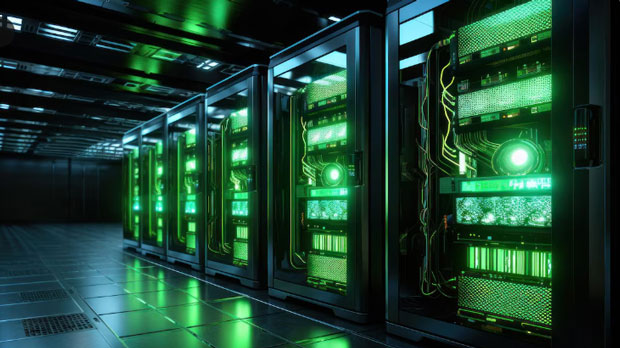When it comes to online security and privacy, many users opt to use proxies to secure their browsing activities. However, there are times when proxies can be blocked, making it difficult to access certain websites or services. "Unblock a proxy" refers to techniques or services that help users bypass restrictions and regain access. This article explores which network environments benefit most from using proxy unblocking methods. We'll discuss various network setups, such as corporate networks, restricted networks, and international browsing scenarios, and analyze how proxy unblocking can help enhance connectivity and privacy in each situation. What is Proxy Unblocking?A proxy is a server that acts as an intermediary between a user’s device and the internet. It allows users to access online resources anonymously or from a different geographic location. Sometimes, proxies are blocked due to network restrictions, which prevents users from reaching desired content. Proxy unblocking is the process of bypassing these restrictions, enabling users to regain access to the blocked proxy server.Proxy unblocking methods can include using VPNs (Virtual Private Networks), proxy rotation, or specialized proxy unblocking services. Each of these methods allows users to access restricted content or websites while ensuring anonymity and security. The necessity for such solutions becomes particularly clear in various network environments, where restrictions or censorship are prevalent.Corporate NetworksIn corporate environments, network restrictions are often implemented for security and productivity reasons. These networks might block certain websites to prevent distractions, safeguard sensitive company data, or ensure compliance with legal and regulatory standards. However, in some cases, employees may need to access resources that are otherwise blocked, such as educational content, research papers, or external services for collaboration.Proxy unblocking solutions can be beneficial in these environments, allowing employees to bypass overly strict network policies. By using proxy unblocking, employees can access necessary information without compromising the network's security measures. However, it is important to note that companies may have strict policies regarding the use of proxy unblocking tools, and any attempts to bypass restrictions could result in disciplinary actions.Restricted Networks in Educational InstitutionsEducational institutions often place restrictions on network access to promote a productive and focused environment for students. This is typically done by blocking access to entertainment websites, social media, and non-educational resources. While these measures are designed to encourage learning, they can sometimes limit students’ access to valuable resources that are crucial for their academic success.In such environments, proxy unblocking methods can help students regain access to websites or services they need for their coursework or research. For example, accessing academic papers, online courses, or global perspectives on various topics may be blocked. Proxy unblocking can provide a workaround for these restrictions, allowing students to explore broader content and learn from diverse sources.Government-Restricted NetworksIn many countries, governments impose internet censorship to control the flow of information or restrict access to certain online platforms. Common examples include the blocking of social media platforms, news outlets, or communication channels that the government deems undesirable or politically sensitive. Citizens in these countries often resort to proxy unblocking techniques to access censored content or bypass geo-restrictions.In these networks, proxy unblocking is essential for users seeking freedom of expression and access to information. By using proxy unblocking methods, individuals can regain access to websites and platforms that are otherwise unavailable in their region. VPNs and proxy servers allow users to mask their location and route traffic through servers in different countries, ensuring their online activities remain private and unrestricted.Public Wi-Fi NetworksPublic Wi-Fi networks, such as those found in cafes, airports, and libraries, are often unsecured and can be vulnerable to various security risks. These networks are frequently monitored, and certain websites or services may be blocked for safety or compliance reasons. Users often seek ways to bypass these restrictions while ensuring their online activities remain private and secure.Proxy unblocking methods can help users access blocked content on public Wi-Fi networks, such as streaming services, social media, or online work tools. However, users should also be cautious of the potential security risks when using public Wi-Fi. Using a VPN alongside proxy unblocking can provide a secure and encrypted connection, protecting users from data theft or privacy breaches.International BrowsingWhen traveling abroad, users may encounter content that is region-locked or unavailable in their current location. This is particularly common with streaming services like Netflix, Hulu, or BBC iPlayer, where content is tailored to specific countries or regions. To bypass these geo-restrictions, users often resort to proxy unblocking solutions.For international browsing, proxy unblocking can help users access content from their home country or from other regions. By using proxy servers located in different countries, users can mask their geographic location and access region-specific content. This is particularly useful for expatriates, travelers, or anyone seeking to access content that is otherwise unavailable in their current location.How Proxy Unblocking Enhances Connectivity and PrivacyProxy unblocking solutions provide several benefits, particularly when it comes to enhancing both connectivity and privacy. Here are some of the key advantages:1. Bypassing Geographical Restrictions: Proxy unblocking allows users to access region-restricted content by routing their internet traffic through servers in different locations. This is particularly useful for accessing streaming services, news websites, or other online content unavailable in a specific region.2. Improved Security: Proxy unblocking methods, especially when used in conjunction with VPNs, provide encrypted connections that protect users' sensitive information from hackers or third parties. This is particularly important when browsing on unsecured public Wi-Fi networks.3. Anonymity: Proxy unblocking tools help users maintain their anonymity by masking their IP addresses. This makes it harder for websites or services to track users' online activities, providing greater privacy while browsing the internet.4. Access to Restricted Websites: In networks where access to certain websites is restricted, such as in corporate or educational environments, proxy unblocking allows users to access necessary resources without violating network policies.ConclusionIn conclusion, proxy unblocking is a valuable tool for users facing network restrictions or censorship in various environments. Whether it's overcoming corporate firewalls, bypassing government censorship, or accessing geo-restricted content while traveling, proxy unblocking provides a solution to regain online freedom. By using VPNs, proxy rotation, or other unblocking methods, users can enhance their internet connectivity, protect their privacy, and access a broader range of online resources.Each network environment, from corporate to public Wi-Fi, has its own unique challenges, and proxy unblocking techniques offer an effective means to navigate these barriers. However, users should always be mindful of the legal and ethical implications of bypassing network restrictions and ensure they are compliant with the policies of their respective environments.
Jun 30, 2025



































































